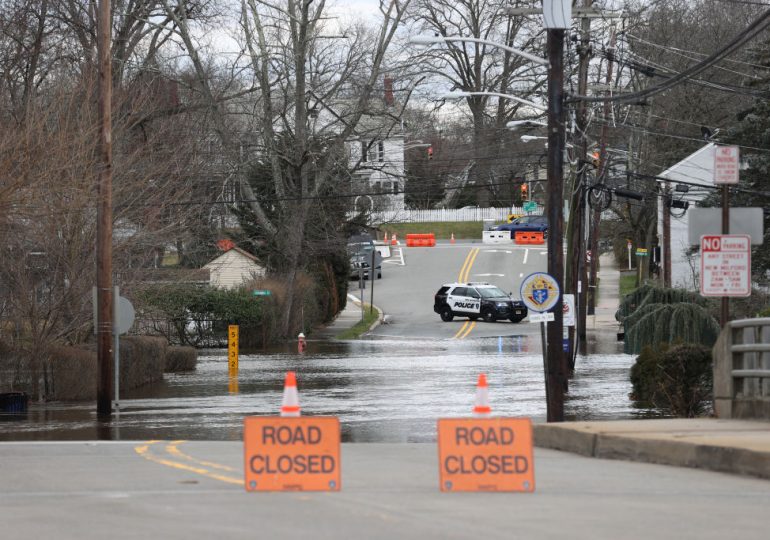A series of powerful winter storms hit the East Coast on Tuesday night, causing significant flooding in several states—including Connecticut, New Jersey, and Maryland.
Despite growing flood risks for homes across the U.S., most home and renters insurance policies do not cover flood damages—though 99% of U.S. counties have experienced a flood since 1998, according to FEMA data. And the cost can add up quickly: just one inch of water can cause roughly $25,000 in property damage.
[time-brightcove not-tgx=”true”]
Here’s what to do if your home has been impacted by flooding.
Only return home when it is safe
The most important thing is to stay safe when returning home after the flood. “Remembering that, as much as it sucks, it is just stuff and you can get back home. It may take time but you can’t replace your life,” says Brad Hubbard, President of National Flood Experts.
Driving in water can be dangerous and the area might have downed power lines that can cause electrocution. Waiting until the area has been cleared before you attempt to return home is the safest approach. “Usually communities will have a team that will say when it’s safe to get into a certain area,” Hubbard advises.
Document the damage
“The first thing you need to do when you are able to get back in your house is take as many pictures as you can,” says Hubbard. Documenting the immediate damage will ease the process of filing an insurance claim if you have flood insurance. “When you go to file a claim, the more information you give them, it makes their job easier and the easier it is for them to justify paying out on a claim for whatever amount it is,” he adds.
Having a record of the damages can also help if you are applying for FEMA aid following a federally declared disaster, as the process requires applicants to submit a list of damages and losses.
Try using fans and dehumidifiers
If your home has less than an inch or two of water, Hubbard says it’s feasible to deal with the problem yourself. “You want to get things dry as fast as possible. Get fans going as quick as possible, get a shop vac,” he says, referencing a machine capable of vacuuming up liquids. “And get as much of the water out as fast as you can.”
However, if the damage is more extensive, it’s important to bring in a professional. “If you have a foot of water, that’s when you’ve got to get a pro in there because the drywall and sheetrock in your house just sucks up the water,” says Hubbard, adding that the expense is worth the peace of mind. “It can cost you up front but it will save you in the long run.”
Handle the situation quickly
It’s important to work to remove the damage quickly once you can return home— the longer water sits, the more likely it is to cause severe problems like mold. “Water sitting just causes more and more damage over time,” says Hubbard. “It can lead to secondary effects like mold and which can create health impacts down the road.”
If you’re working with a lot of water, call a water remediation company to help handle the process—they might take more severe steps if the situation calls for it. “They’ll get the carpet out, they’ll cut the drywall to get anything that holds water out to really reduce the possibility of further damage with mold or things like that.”
Leave a comment








